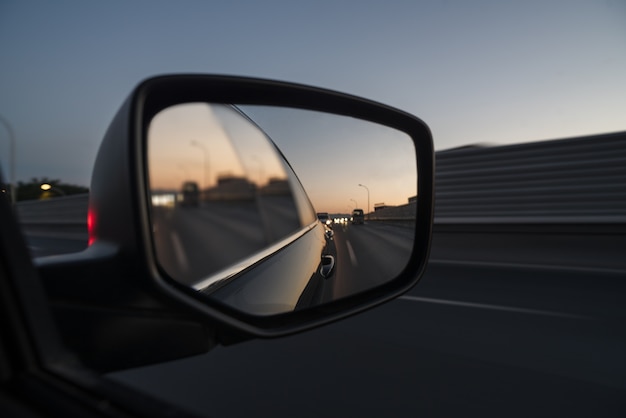The use of mirror cameras, also known as digital side mirrors or e-mirrors, has been gaining popularity in the automotive industry. These high-tech devices replace traditional side mirrors by providing a live video feed to screens inside the vehicle.
This technology has sparked much debate among car enthusiasts and experts alike. Some see it as a significant advancement that will improve safety and reduce drag, while others are skeptical about its practicality and potential drawbacks.
In this article, we’ll take a close look at mirror cameras and go over the benefits and drawbacks of replacing side mirrors with mirror cameras. Click here to learn more about the innovative technology.
The Pros
Improved Aerodynamics:
Mirror cameras can significantly reduce aerodynamic drag compared to traditional side mirrors. A road vehicle’s aerodynamic drags can account for up to 50% of the fuel used in the vehicle overall, which is why they consume so much fuel.
Enhanced Visibility:
Mirror cameras offer a wider field of view compared to traditional side mirrors. They can eliminate blind spots by providing a real-time, high-definition view of the surroundings.
Reduced Noise:
Since mirror cameras do not have physical mirrors to create wind noise, they can contribute to a quieter driving experience and a more comfortable ride, especially on highways.
Integrated Safety Features:
Many mirror camera systems include additional safety features, such as lane departure warning, blindspot detection, and rear cross-traffic alert, which enhance overall driver awareness and safety.
Adaptability and Customization:
Mirror camera systems offer more flexibility in terms of display placement and customization. Drivers can adjust the display according to their preferences, improving overall driving comfort.
Reduced Maintenance:
Traditional side mirrors are prone to damage from accidents, vandalism, and environmental factors. Mirror cameras, being electronic, are generally more durable and require less maintenance.
The Cons
Reliance on Technology:
Mirror cameras rely heavily on electronic components and can malfunction due to technical issues like software glitches or electrical failures. This reliance on technology raises concerns about system reliability and durability.
Visibility in Extreme Conditions:
Mirror cameras may struggle to provide clear visibility in certain weather conditions, such as heavy rain, snow, or fog. Water droplets or ice buildup on the camera lens can obstruct the view, compromising driver safety.
Cost of Repairs:
While mirror cameras may reduce maintenance costs in the long run, the initial cost of repair or replacement in case of damage can be significantly higher than that of traditional side mirrors.
Regulatory Approval:
Mirror camera systems are still relatively new, and regulatory standards regarding their use and performance vary across regions. Some countries may require specific certifications before allowing mirror cameras to replace traditional side mirrors.
Driver Adaptation:
Switching from traditional side mirrors to mirror cameras may require drivers to adapt to a new way of perceiving their surroundings. Some drivers may need help to trust the camera feed over the traditional mirror reflection.
Many drivers still prefer the comfort and dependability of traditional side mirrors, even with the benefits of mirror cameras. However, as technology advances and regulatory standards evolve, mirror cameras may become the standard in the automotive industry.
Final Thoughts
Essentially, mirror cameras offer several benefits over traditional side mirrors, including improved safety, reduced drag, and customization options.
However, their drawbacks include reliability concerns and a higher initial cost. Ultimately, the suitability of mirror cameras will depend on individual preferences and needs.
As technology in the automobile industry advances, it becomes increasingly important to consider the advantages and disadvantages of new features before incorporating them into our cars. Mirror cameras show great potential, but only time will tell if they will become a standard feature in all cars.

